Spirit of the Public Square
Landslide
A visual history of protest and grief, and a chronicle of the public square as an immutable witness to a cycle of revolt.
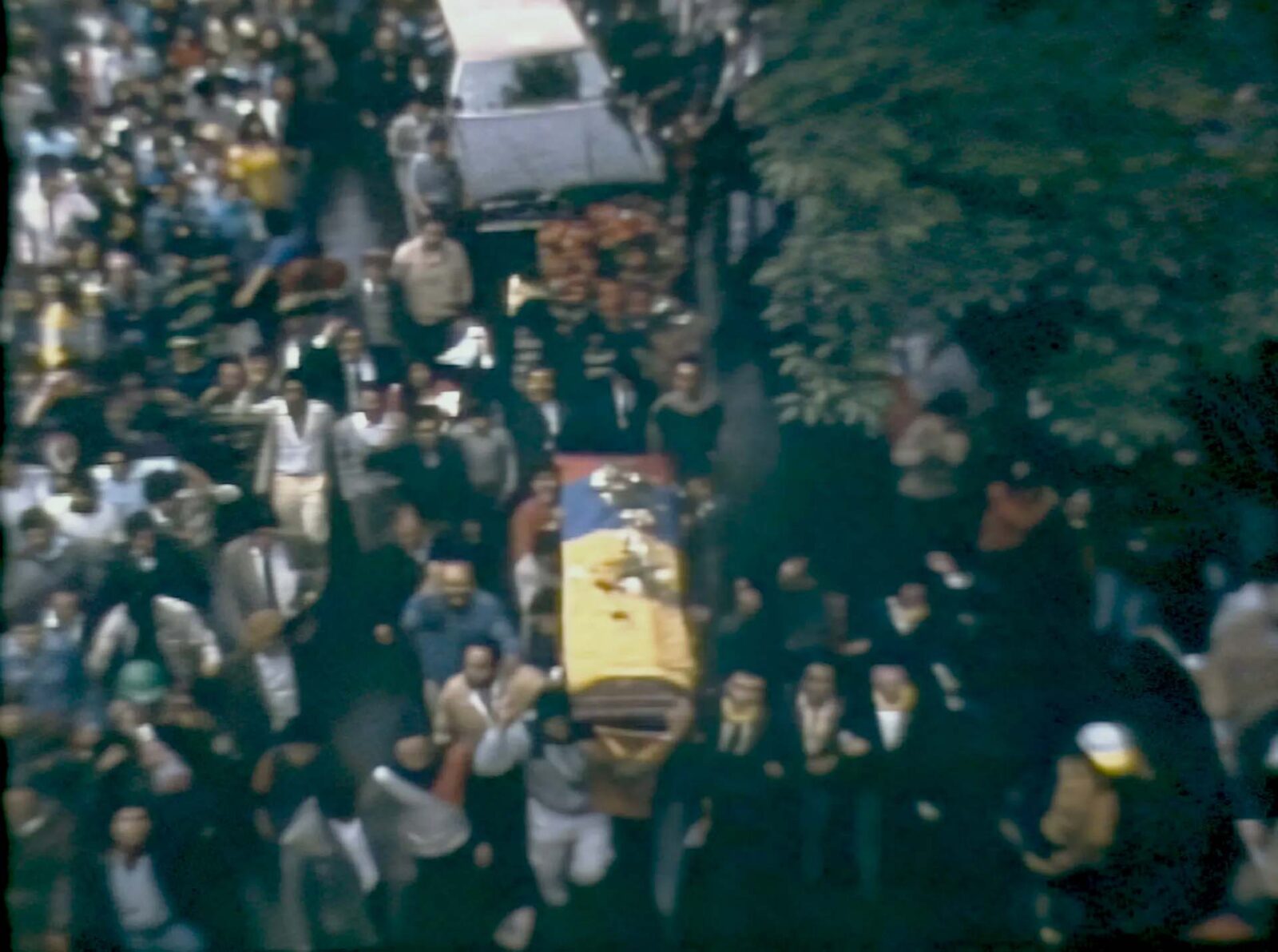
The struggle never ends: a fact of life, a fact of history. Film becomes video, the carriage becomes the car, but injustice persists, ever so violent and perverse. To borrow a title from Jean-Pierre Gorin and Jean-Luc Godard’s Struggle in Italy, Daniel Cortés Ramírez’s Landslide makes the argument for a “lotte in Colombia”, stringing together images of demonstrations that span roughly one hundred years of the country’s past. In a progression from the 1920s up to the present, Cortés Ramírez creates a visual history of protest and grief, and a chronicle of the public square as an immutable witness to a cycle of revolt and comradeship.
Premiering in International Documentary Film Festival Amsterdam’s shorts competition—in a context where there had been much discussion about the inert response from the festival in regards to the atrocities committed in Gaza—Landslide is a good reminder of the need to come together as communities and exercise one’s right to protest. As much as the Colombian short speaks of the past, it is also a lesson for our present.
The film opens on Bogotá’s Plaza de Bolívar, only for it to reappear all throughout as an iconic space so intrinsically tied to Colombia’s most significant manifestations. What is the square, if not the agora: the place to discuss public matters, express dissent, and start revolutions? Times change, fashions come and go, and so do the cultures of protest, yet Landslide sees this space remain one of the people, traversed periodically by grieving processions and masses marching under angered slogans.
Cortés Ramírez’s gaze centres on public displays of resistance, enhancing the solidarity and togetherness of protestors as much as the communal nature of lamentation in times of great injustice. From black-and-white to colour, these no-commentary montages of archival footage—possible newsreels or amateur accounts—speak not about crowd mentality but about a crowd conscience: it moves and suffers as one, like a collective being made up of raised fists and funerary flowers.
Behind this hopeful materialisation of solidarity, there is, however, a palpable sense of pain. Through repetitive motifs and actions, Cortés Ramírez succeeds in communicating the alternation between exaltation and exhaustion that comes with a never-ending fight. Opposite the protestors, another recurring presence is the authorities. The streets are the battleground more than in a metaphorical sense: Cortés Ramírez compiles images of clashes, methods of suppression, oppression, and physical or armed violence that repeat systematically. These protestors never seem to fight among themselves; they are not factions put against each other, but it is the system and the state that come across as the perpetual perpetrators.
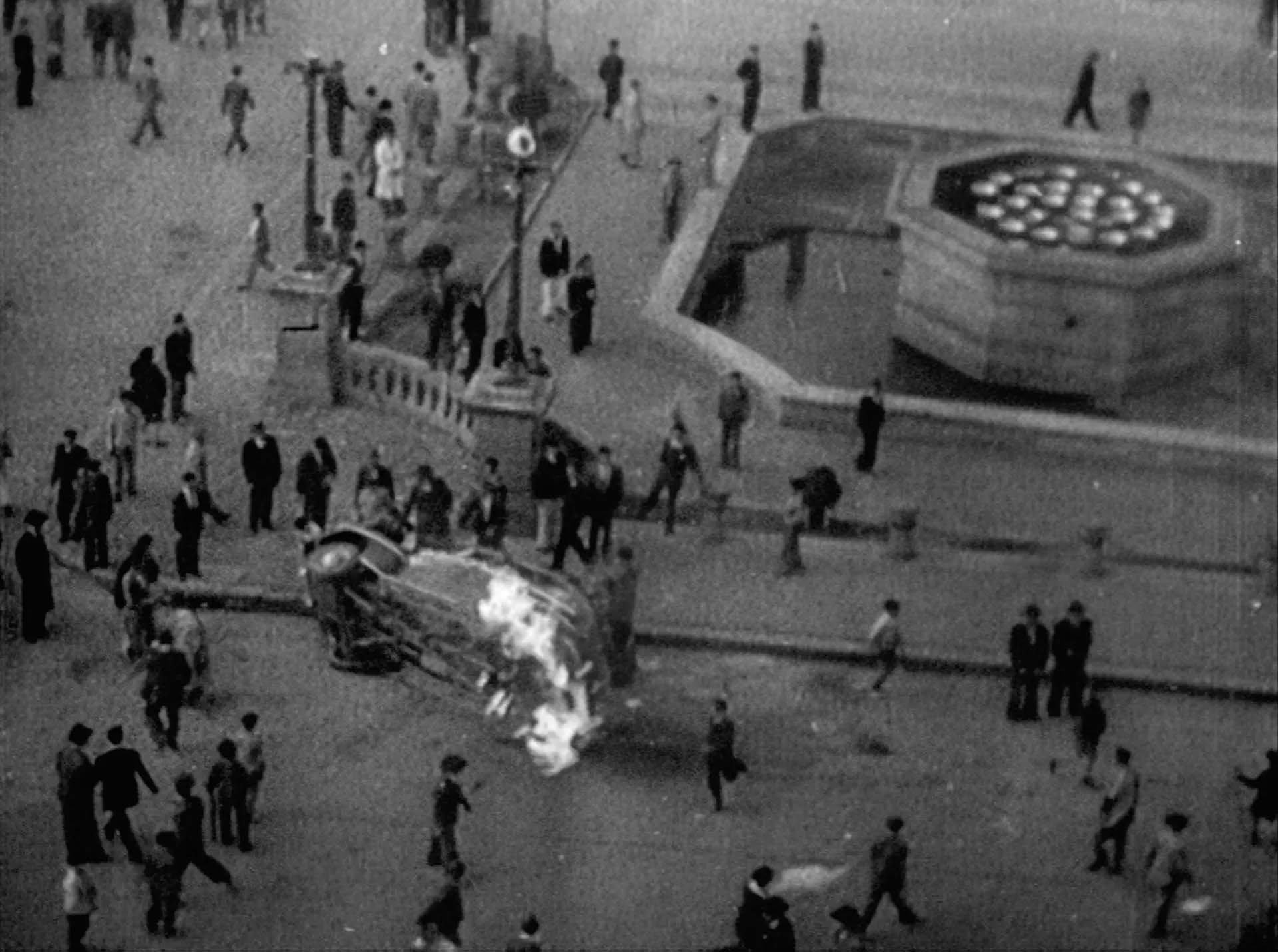
Landslide
The signs protesters raise suggest this is a Spanish-speaking nation, and there might be names like Gaitán to orient the specific context, yet an unfamiliar viewer may initially find it hard to place these images of struggle in Colombia. Only when the film shifts to colour do the flags draped over coffins explicitly locate the country; up to that moment, these demonstrations could be taking place anywhere in the Spanish-speaking world, so widespread injustice has been. Both locally Colombian and universal, Landslide transcends time and geopolitical spaces: “My cause is the cause of my people, the cause of all oppressed peoples,” says a banner held by a crowd as it’s marching forward.
History is a continuous stream in Cortés Ramírez’s film. Images flow smoothly into each other without an indication of the year or any auxiliary text. This minimalist and non-interventionist approach to found footage elegantly runs against the risk of being annoyingly over-explicit. As a result, it allows viewers to interact more freely with the images themselves. More than a scholarly compilation of historical facts, the film looks for recurring realities and patterns of injustice across arches in time. It both emphasises the circularity of violence and recounts Colombia’s modern history, as seen through its defining protests.
Cortés Ramírez’s historical tone and implicit commentary on images of violence and the recurrence of structural imbalance recall perhaps the films of Yervant Gianikian and Angela Ricci Lucchi. Despite its shorter runtime, Landslide shares in its analytical intent a similar drive. Artists-filmmakers Gianikian and Ricci Lucchi often explore in their work the underlying ideologies, colonial reverberations, and systems of exploitation that exist within found footage. However, the Colombian director reminds most of the two on a formal level, especially through an austere and uncanny soundtrack—silence, clanging, ripping, and brief moments of music and no voice commentary. Much like Gianikian and Ricci Lucchi, Cortés Ramírez plays with speed and often slows down black-and-white images for them to be taken in more profoundly, for faces to linger longer, and for individuals to be reclaimed from the fogs of history. In Landslide, however, this act of salvaging from the rubbles of history is cyclical and links individuals through time, as if evoking a reincarnating genie of solidarity.
As the film advances to the present day, Landslide also doubles as a treatise on media history, investigating the role of the camera as a medium of actuality, tracing its technological evolutions from silent film to sound, from film stock to video, and then to digital. When, at first, we can only imagine the shouting of silent-era protesters, the video camera later also records their voice, rendering their struggle more real in a more complete document. Becoming progressively more accessible over the years, the camera perfects itself into a more potent tool for resistance, joining the crowds in the streets up close and multiplying its core roles: to record, to document, to witness, but also to amplify, to disseminate. With the camera now a smartphone, recording has turned into an inherent and active part of protesting, an immediate instrument in the hands of the people—an opportunity that previous generations had only to an incomplete degree. This journey through history also acts as a document of how the strategies of protest have changed over time—if in the 1920s rallies were more conventional, in the 2000s, outcry is expressed through performance art and other performative actions.
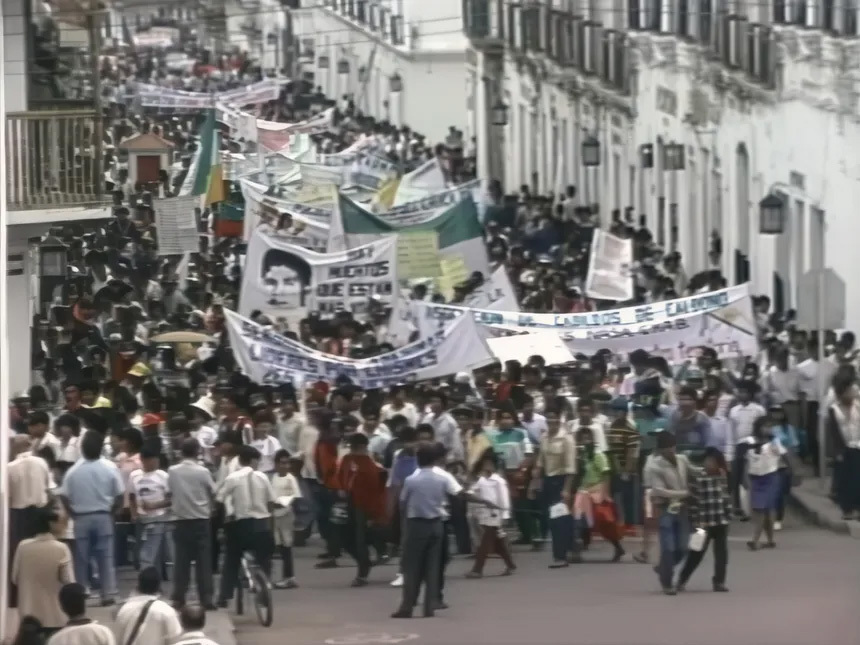
Landslide
The risk with a film like Landslide, from an audience perspective, is to treat images of protests as mere images, to aestheticize values, to remove political connotations, and to flatten meaning. It’s easy to become obsessed with the image and to bracket the concrete reality it represents when looking back on it from a safe, comfortable distance. In a context where IDFA struggled to issue a clear demand for a ceasefire in Gaza, acting in solidarity has become immediately urgent, and a certain privilege has also transpired.
We—filmmakers, critics, programmers, and institutions in the West—can safely retreat from the streets and find shelter in a cinema seat. Five years from now, we might reap the images from these tumultuous moments, analyse and quite likely showcase them. This will be our chosen method to impart “justice”. Then. Not now. Now, we shy away from the streets and program in good weather.
So, who is crowding the streets of the film industry? How do we challenge the inert role of that cosy screening room? The metaphoric streets have materialised at IDFA from the bottom up, with many filmmakers who withdrew their films from the festival and others who used it as a platform to educate and create solidarity. To return to the cue that Landslide brings about, exercising the right to protest is imperative because the oppression of one often speaks of the oppression of all.

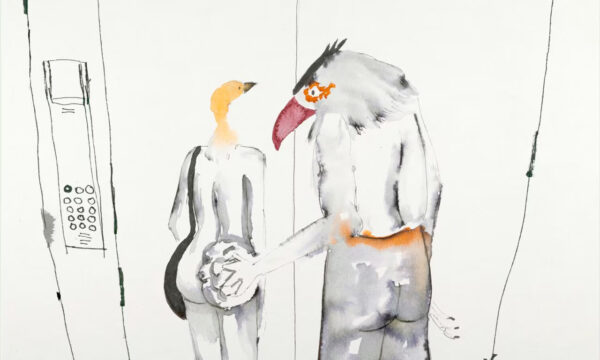
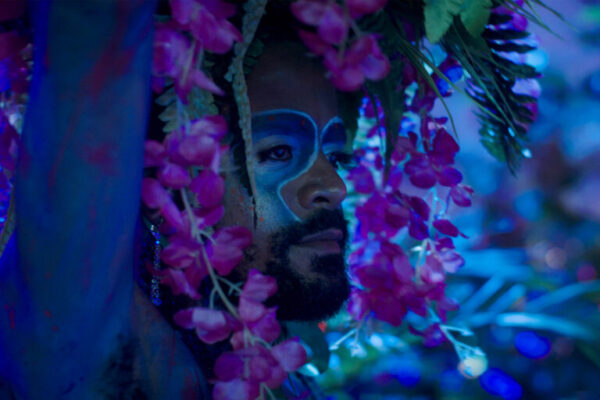
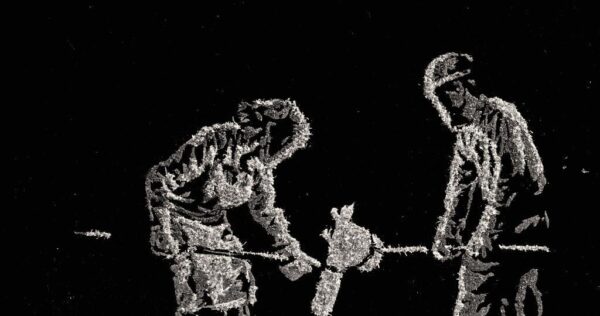
There are no comments yet, be the first!